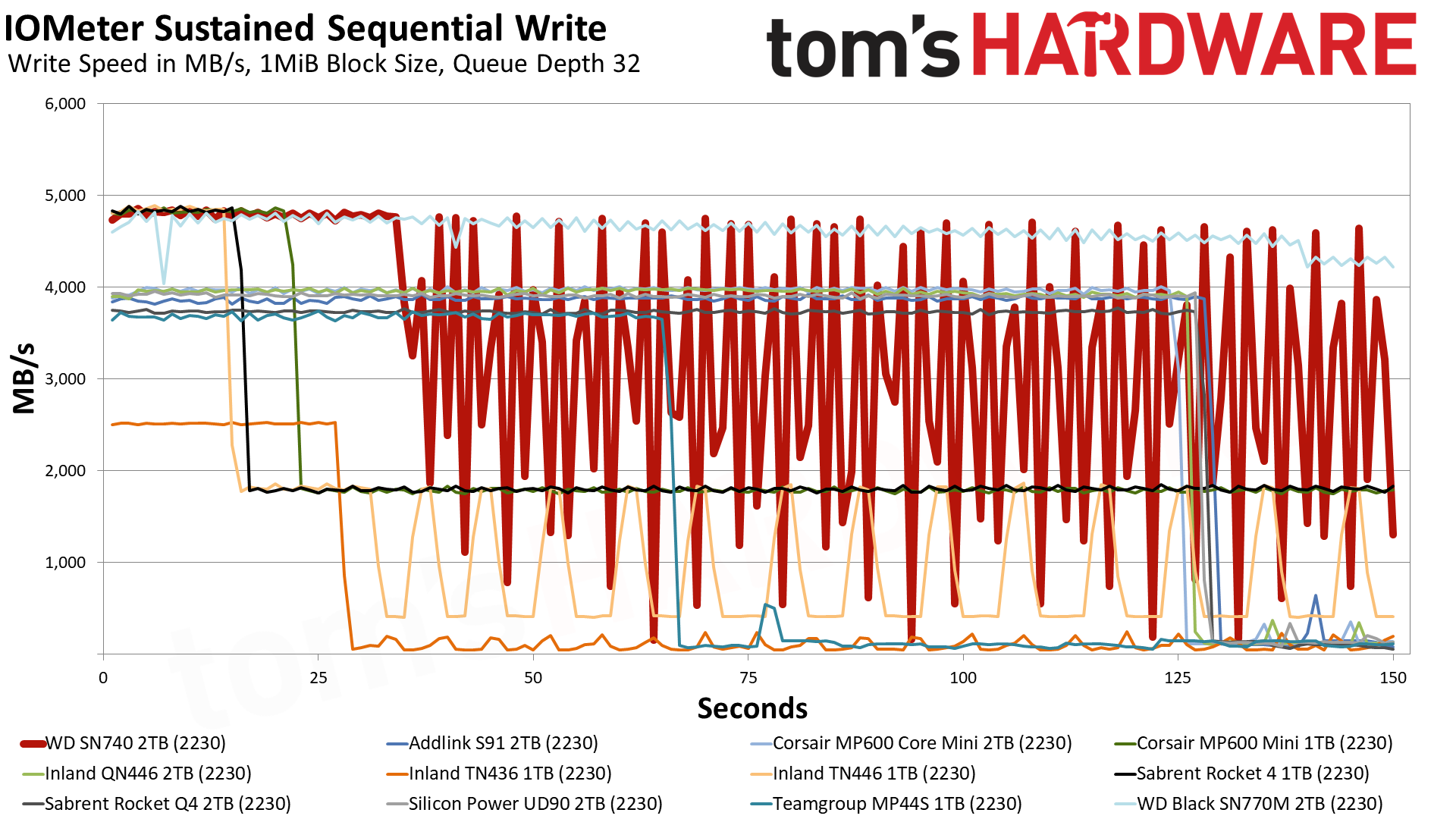Superb review! Great to see Tom's add this to your 2230 lineup.
My main critique is this review is lacking a stronger discussion around pricing. GB/$ is king for most when looking at purchasing a drive, and this beats every other drive by min of $30 to 2x the price while offering comparable performance. The main drawback is OEM so good luck with a warranty if you need it... But many of us are comfortable with this, evident by us purchasing a drive off Aliexpress, won't lie as I was very worried about it being some fake drive for the price initially. Other point of contention, the 1TB are great for benchmark comparison, but they truly are a separate class, so the suggestion of purchasing BC711 doesn't make sense to me as it has no 2tb entry, would be a fairer fight to compare the sn740 1tb entry as I suspect its performance and efficiency profile may improve(Sacrifices were made to cram 2tb in this form factor). When we are in the 2tb class we are here because we need/desire the space.
It was great to see this drive sometimes beat the SN770M(at a fraction of the price) as well as having equivalent real world performance and battery life (which one would not expect from its poor efficiency showing). Also thank you for the in-depth sustained write performance data, really found the inconsistent performance intriguing as it seems to be capable of flushing the cache, speed returns only to fill it back up again and throttle down. The initial performance of the S91 is amazing on QLC, can't wait to see what WD can do with an update, but this might be the end of TLC, I would expect them to follow QLC for the next release...
I can't seem to find it anywhere but I would be interested in seeing what max temp was seen during the sustained write performance for each drive, gives a good indication on how the controller is tuned for performance and how important cooling is to maintain peak capabilities.
Thanks again to adding this to your line up of 2230 drives! Will be a great baseline going forward to compare against as we get newer entries into this small form factor space(I sure hope we see 4TB drives or pcie gen 5 entries even though both in this form factor is a bit absurd

). What we really need is someone brave enough to integrate a solid state fan (
airjet) with these solid state drives (Throw power consumption out the window, make it PCIE gen 5 and set some records). I don't expect it to sell well, Optane didn't, as storage is too price sensitive of a space but like drag racing, it is a fun hobby.


 ). What we really need is someone brave enough to integrate a solid state fan (
). What we really need is someone brave enough to integrate a solid state fan (